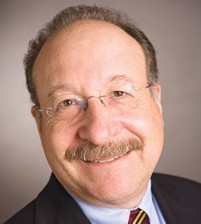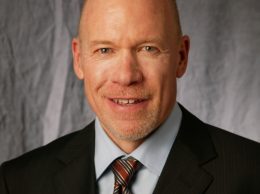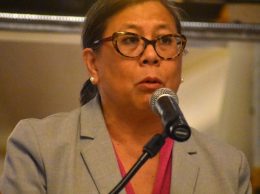After seven years, the financial crisis quietly ends for area banks

Henry Dubroff
In banking and in life, seven years is a very long time.
But that’s roughly how long it’s taken for the financial crisis to work its way through the Tri-Counties’ banking system.
Along the way, the industry was dramatically reshaped, hundreds of jobs vanished and brands including Countrywide, Santa Barbara Bank & Trust, Los Padres, Affinity, First California and others disappeared.
By my calculation, the crisis first hit the region in the spring of 2007, when Countrywide began to feel the onset of the housing meltdown. That summer, Bank of America agreed to buy the home lender for $4.1 billion, which was viewed as a fire sale price. The crisis officially ended March 13, when the Federal Reserve Bank of San Francisco lifted its regulatory order against Goleta-based Community West Bancshares, the third-largest bank in the Tri-Counties. The order appears to have been the final outstanding regulatory action against a bank in the region.
To get some perspective on the financial crisis, I picked up the phone and called Community West CEO Marty Plourd, a 33-year veteran of California banking who took over at the Goleta-based bank in November 2011.
The publicly traded bank, now celebrating its 25th anniversary, has seen its shares rebound sharply in the past year amid a turnaround in profits and reduced loan loss reserves. With $539 million in assets at year-end and branches from Westlake Village to Santa Maria, Community West has a footprint that spans most of the region. Its 2013 profit of $9 million, up from $3.2 million a year earlier and a $10 million loss in 2011 speaks for itself.
Plourd thinks one big impact of the financial crisis and subsequent Dodd-Frank reforms is that the cost of operating a smaller bank has risen dramatically. “If you are public, the burdens are going to grow,” he said, citing new risk-management measures and other costs associated with new rules.
The bottom line is that profit pressure on smaller banks will create an “active mergers and acquisitions landscape” for the foreseeable future.
That the crisis might last seven years or longer was predicted in Carmen Reinhart and Ken Rogoff’s landmark work, “This Time is Different. Although the authors have walked back their analysis of debt-to-GDP ratios, they were prescient in pinpointing the weak recovery from recessions triggered by financial panics.
That point struck home earlier this month when UC Santa Barbara economist Peter Rupert and his team suggested it’s taken roughly seven years for Santa Barbara County to regain the jobs it lost from the 2007 peak. And SNL Financial, which follows the banking industry, reports that the number of undercapitalized banks in the U.S. has finally fallen to pre-crisis levels [See Vital Signs, page 3A].
“Even the pessimists were thinking three years,” Plourd told me. “No one expected the low-interest-rate environment to last this long,”
Now the danger is that as new Federal Reserve Chair Janet Yellen maneuvers to unwind the central bank’s $4 trillion balance sheet, rising interest rates could trigger losses in fixed-income holdings on bank balance sheets. Treasury yields climbed March 19 after the Fed said it would continue to reduce bond buying and give itself more leeway in considering when to end its longstanding zero-rate policy. “A rising interest rate environment is going to hurt some investment portfolios,” Plourd said.
For Community West, the future lies in gradual expansion with infill branch acquisitions or de novo operations. The key is finding increasingly harder to come by talent and locations that are attractive for smaller and more technology-driven commercial bank branches, particularly in Ventura County, where commercial and industrial deals are starting to percolate.
Finally, a personal observation. At the onset of the financial crisis, regional banks were the key drivers for the tri-county economy; their actions both reflected economic conditions and heavily influenced future activity. To check in on a couple of bankers was to understand pretty clearly where the economy was headed.
The post-crisis banking scene is very different. Our new “big three” of regional banks — Heritage Oaks Bancorp, Montecito Bank & Trust and Community West — don’t have the overarching influence of their predecessors.
But they and their counterparts remain extremely important in funding the companies at the heart of the economic recovery. The players have changed, but the fundamentals of sound banking remain the same.
• Contact Henry Dubroff at [email protected].












